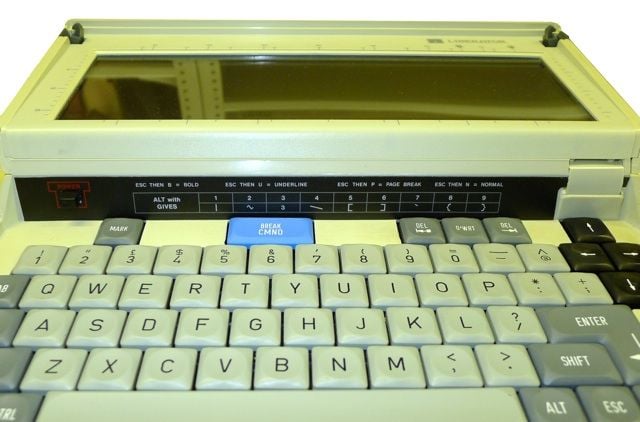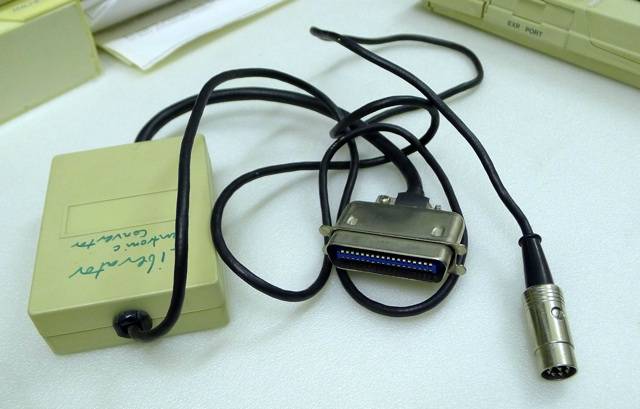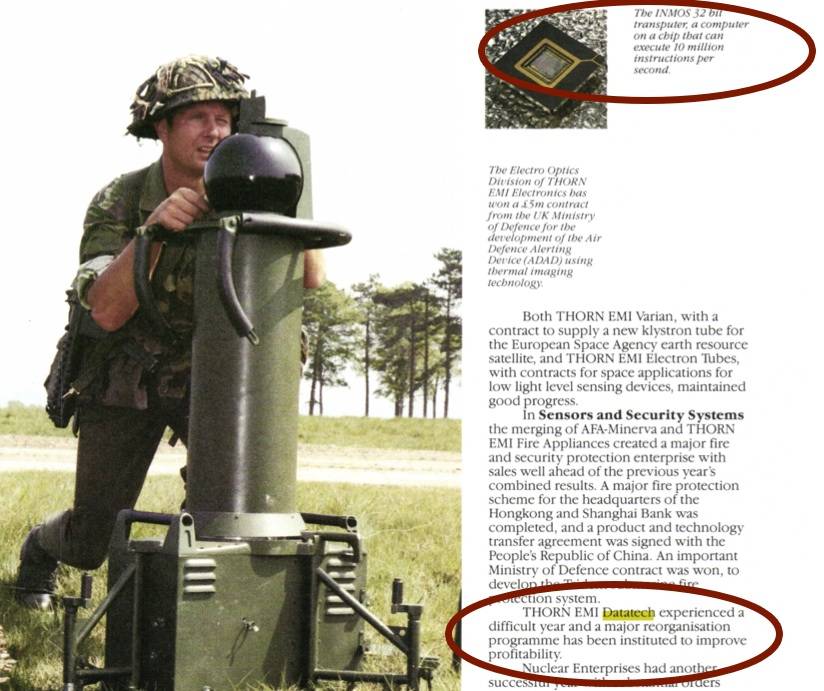This article is more than 1 year old
Liberator: the untold story of the first British laptop part 3
Into the maelstrom
Not enough of a PC
Personal Computer World magazine's Nick Walker and other Liberator reviewers liked the machine’s simplicity - the ease of use which Bernard Terry, who had by now quit the Civil Service and was working as a consultant to Thorn EMI's marketing team, had wanted from the start. Reviewers Glyn Moody, for Practical Computing, and Nick Walker both praised that ‘everyman’ quality too.
“As a final test of the machine’s simplicity, I left it in the hands of a non-computer user. Within an hour, she was creating finished documents, and was familiar with most of the editing operations,” wrote Walker in PCW. “Similar experiments with a full-scale word processor can take weeks, so it does seem that Thorn EMI has succeeded in making the machine very easy to use.”

Coasting along: the laptop for the surfing?
That that was the case was all thanks to Bernard Terry continually flying the flag for simplicity during the Liberator's development. That included building a tutorial into the machine. "I wrote the tutorial, which incidentally all my grandchildren were brought up on," Terry recalls today.
Both Walker and Moody were pleased with the Liberator's ease of use, but couldn't refrain from complaining that rival products, primarily word processing packages for desktop computer, could do a whole lot more. Indeed, they also highlighted the Liberator’s inability to do anything else other than edit text. Despite Thorn EMI’s July 1985 pre-launch claim that the laptop had access to an “extensive applications” library, there were no other programs offered with the machine than Wordcom.
“Perhaps the main problem with the machine is that it is only a word processor,” Moody judged. “There is no electronic mail - though Thorn EMI hopes to release this very soon - and no other programs run on it. This places it at considerable disadvantage to its Japanese rivals.”

A computer designed up for text editing, the Liberator was criticised for not being enough of a PC
Added Walker: “I did yearn for a few features found on more complex word processors. Most noticeable was the lack of line spacing and centring or right justification for headings and addresses.” Both writers noted that the Liberator lacked a readily accessible operating system - though Walker had spotted a Digital Research copyright notice - and a Basic interpreter. Of course, the Liberator used CP/M, but it remained buried beneath the text editor, deliberately to avoid baffling or intimidating non-technical users.
Of course, both writers were computer people - not at all the kind of folk Bernard Terry had envisioned the Liberator being used by. He wanted a simple, dedicated text processing machine, and that’s what he got. But it was being sold against general-purpose computers that salespeople could pitch as kit able to do anything at all - just plug in the right software: word processors like WordStar, spreadsheets like Multiplan, databases like dBase and a whole lot more besides. And, as Terry himself admits today, back then IT purchasing was mainly handled by IT professionals, and they wanted to buy 'real' computers, not application-specific kit for everyone else.

Converting the Liberator's S5/8 Din ports to the more useful Centronics connector require kit like this
Towards the end of 1985, it was announced that the Liberator was up for a Rita: a Recognition of Information Technology Achievement award. It was shortlisted in the Systems Innovation of the Year, but come the awards night on 14 January 1986 it was the Sinclair QL-based One-Per-Desk phone-computer combo from ICL which was announced as the winner by Blue Peter's Lesley Judd.
Six months later, Thorn EMI's 1986 Annual Report tersely hinted at problems with one of its subsidiaries: Thorn EMI Dynatel, which just so happened to be the Treorchy-based operation to which the Dragon Data team had been initially connected and whose future the Liberator project was supposed to secure. Instead, by March 1986, Thorn EMI had rid itself of the division and the factory, selling it off to Swansea-based Industrial Developments in a bid to shore itself up against the even greater losses it was being subjected to by chip maker Inmos and another subsidiary, Thorn EMI Datatech.
The one-time Liberator factory in Treorchy was finally closed in the late 1990s. By then it was owned by a Chinese firm, Wang’s International. Now it is entirely derelict, just an empty shell.

A very bad year: Thorn EMI had a tough 1985-86, thanks to losses at chip maker Inmos and hardware manufacturer Datatech
Datatech's woes centred on the ongoing decline of the home computer market. It had been Sinclair’s production partner, for instance, punching out Spectrums and QLs. “Datatech experienced a difficult year and a major reorganisation programme has been instituted to improve profitability,” Thorn EMI bosses noted in the 1986 Annual Report. The subsidiary, “which also used to manufacture for Sinclair”, underwent a turn-around programme “necessitating substantial reductions in staff levels and facilities”.
Sinclair’s own troubles would see it acquired that year - the deal was announced on 7 April 1986; Thorn EMI’s difficult financial year ended on 31 March - by Amstrad. Alan Sugar’s company wanted to produce Sinclair products cheaply in the Far East and, after a brief period while Datatech used up its stock of components, moved Spectrum manufacturing to Asia.
